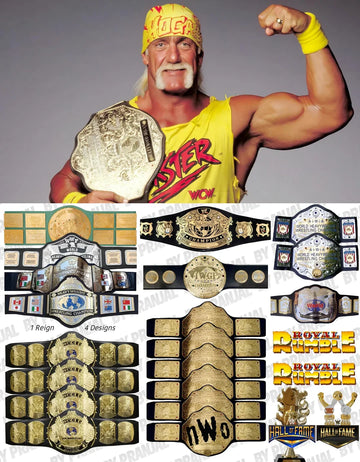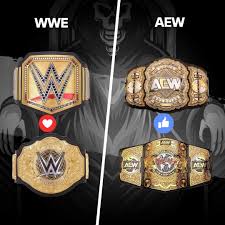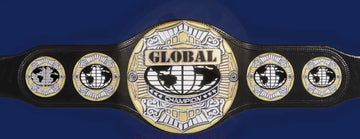The WWE Championship belt is more than just a symbol of victory — it’s a reflection of wrestling history, character storytelling, and design evolution. From leather-strapped gold plates of the early days to customized, high-end showpieces today, WWE belts have changed dramatically over the decades. This journey through time highlights how each era of WWE brought new attitudes, stars, and belt designs that left lasting impressions on fans and collectors alike.
📺 The Classic Era (1963 – 1980s): Where It All Began
WWE (originally known as the WWWF — World Wide Wrestling Federation) introduced its first championship belt in 1963, when Buddy Rogers became the inaugural champion. The belts from this era were fairly simple and functional, consisting of smaller gold plates and thin black leather straps. The design wasn’t flashy — but it held weight. These early belts focused on tradition, mimicking the look of boxing belts to emphasize legitimacy.
Wrestling greats like Bruno Sammartino carried these early titles with pride during his record-setting reigns. Though the designs lacked the polish of later generations, they laid the foundation for the prestige of WWE gold. For collectors, these early belt styles are now seen as vintage treasures representing wrestling’s roots.
🦅 The Golden Era (Mid-1980s – Early 1990s): The Winged Eagle Takes Flight
As WWE grew into a pop culture powerhouse in the 1980s under Vince McMahon’s leadership, the championship belts received a major facelift. In 1988, WWE introduced the now-iconic Winged Eagle Championship Belt, which remains one of the most beloved designs among fans.
This belt featured an American bald eagle spreading its wings over a detailed globe — a symbol of power, patriotism, and global reach. It was ornate, with intricate detailing that elevated its status and prestige. Superstars like Hulk Hogan, Ultimate Warrior, Randy Savage, and Bret Hart made this belt a household image. It became synonymous with WWE’s rise to mainstream success during the golden age of wrestling.
Collectors prize the Winged Eagle for its craftsmanship and nostalgic value. It’s a go-to choice for fans who love classic wrestling aesthetics.
🔥 The Attitude Era (Late 1990s – Early 2000s): Edgy Looks for Edgy Times
With the dawn of the Attitude Era, WWE shifted its brand toward a more rebellious, adult-oriented audience. The belt designs followed suit. Gone were the traditional symbols of prestige — replaced by bolder, more aggressive looks.
In 1998, WWE introduced the “Big Eagle” Championship Belt, often referred to as the Attitude Era Belt. It retained the eagle motif but expanded the plate size, making it flashier and more commanding. This belt was worn by legends like Stone Cold Steve Austin, The Rock, Triple H, and Mankind, during a time when WWE was battling WCW for supremacy in the Monday Night Wars.
Perhaps the most notable twist was the rise of custom belts:
-
Stone Cold’s Smoking Skull Belt was custom-made with a skull, rattlesnakes, and red eyes — an unapologetically bold belt that matched his anti-hero image.
-
The Rock’s Brahma Bull Belt, though rarely seen on TV, was another example of superstars putting their stamp on championship gold.
This era changed the way belts were perceived — they became extensions of a wrestler’s persona, not just a prize.
🥇 The Ruthless Aggression Era & Brand Split (2002 – 2010s): A Tale of Two Titles
When WWE introduced the brand split in 2002, Raw and SmackDown each needed their own world title. This resulted in one of the most visually rich eras for championship belts.
The WWE Undisputed Championship, introduced shortly before the brand split, had a sleeker, more elegant design — polished gold with a refined silhouette. It was held by top-tier talent such as Brock Lesnar, Kurt Angle, and Eddie Guerrero, and is often remembered for its balance between tradition and modernization.
Meanwhile, the World Heavyweight Championship — better known as the Big Gold Belt — was reintroduced from WCW. This belt was massive, regal, and loaded with legacy. Carried by legends like Triple H, Batista, Edge, and The Undertaker, it became a fan favorite for its grandeur and history.
In 2005, John Cena introduced the polarizing Spinner Belt. Inspired by hip-hop culture and street fashion, the belt featured a spinning WWE logo and bright, blingy elements. It was meant to reflect Cena’s youthful, flashy character — and it worked. Though traditionalists disliked it, the belt became iconic in its own right and was used for nearly 8 years, worn by stars like CM Punk, Randy Orton, and The Miz.
🌐 The Modern Era (2013 – Present): Global Appeal and Unified Branding
As WWE grew into a publicly traded global entertainment brand, the look and purpose of its championship belts evolved again. In 2013, after unifying the WWE and World Heavyweight Championships, the company introduced a single, streamlined title known as the WWE World Heavyweight Championship. This was a cleaner, more modern belt that placed emphasis on branding over legacy.
By 2014, WWE launched its now-standard Network Logo Championship Belt, showcasing a large, crystal-encrusted WWE logo at its center, framed by clean black and gold design. This belt served as the base template for many titles across WWE’s roster, including:
-
WWE Raw and SmackDown Women’s Championships
-
Tag Team Titles
This era emphasized uniformity and recognizability, making the belts marketable for merchandise and instantly recognizable for fans worldwide.
In 2023, WWE updated Roman Reigns' title to the Undisputed WWE Universal Championship, which added a more prestigious gold-centered plate while still keeping the modern branding. It marked a perfect blend of history, dominance, and modern visual storytelling — just like Roman’s dominant run.
🎨 Custom & Themed Belts: Championship as Personality
WWE has continued to push creativity through custom championship belts, allowing characters to further embody their stories. Recent examples include:
-
The Fiend’s Custom Horror Belt – a terrifying, mask-like title made of molded latex and leather.
-
Daniel Bryan’s Eco-Friendly Belt – constructed of hemp and wood to reflect his environmentalist character.
-
John Cena’s Spinner Variants – including a U.S. Title spinner, and a diamond-encrusted version.
These belts aren’t just props — they’re an extension of the wrestler’s identity and help fans form deeper connections.
🛒 Want to Own a Piece of WWE History?
Every WWE belt tells a story — and now you can own that legacy. At [Title Belt Store], we offer high-quality replica WWE belts, custom championship belts, and even themed collector's pieces inspired by the greats.
Whether you're a fan of the Winged Eagle era or want a modern Undisputed title for your collection, we’ve got the gold for your shelf.
👉 [Browse WWE Replica Belts]
👉 [Create Your Custom Championship Belt]




